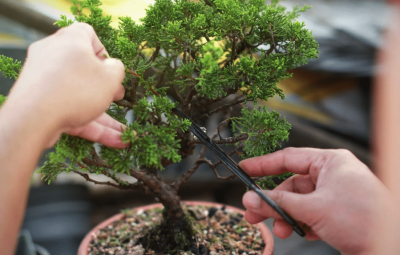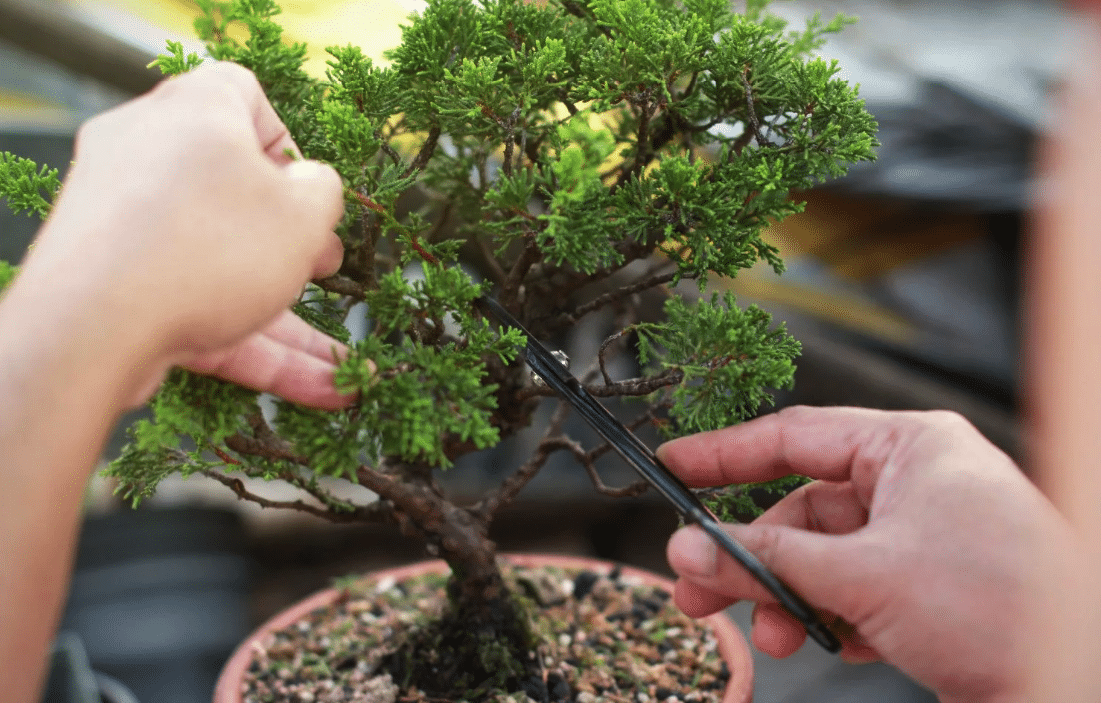Get yourself a great Bonsai Garden- with Bonsai Care and Growing Tips
The word “Bon-sai” (often misspell as bonzai or banzai) is a Japanese term which, literally translated and means “trees that are planted in a shallow container”. This art form is derived from an ancient Chinese horticultural practice, part of which was then redeveloped under the influence of Japanese Zen Buddhism. Almost any kind of tree or plant can be a Bonsai, with the right care and styling techniques. The important thing to remember is that a Bonsai is a tree, and has a tree’s needs. Trees respond to your care, and will thrive with your attention!
The size classifications, increasing in size
- Keshitsubo: 1-3″ (3-8cm)
- Shito: 2-4″ (5-10cm)
- Mame: 2-6″ (5-15cm)
- Shohin: 5-8″ (13-20cm)
- Komono: 6-10″ (15-25cm)
- Katade-mochi: 10-18″ (25-46cm)
- Chumono / Chiu: 16-36″ (41-91cm)
- Omono / Dai: 30-48″ (76-122cm)
- Hachi-uye: 40-60″ (102-152cm)
- Imperial: 60-80″ (152-203cm)
General Care Guidelines
Sunlight Requirement
Bonsai needs direct sunlight, from which they make their food. A lack of direct sun will damage them, causing leaves to fall and other problems. They like to receive 5-6 hours of sunlight daily, whether inside or outside. In warmer months try to keep all Bonsai outdoors (May-September), though there are many species which can be kept indoors year-round. Remember that the more sunlight and warmth your Bonsai receives, the more often it will need water.
Watering
Proper watering is essential to the health of your miniatures. Bonsai like to get a little dry in between watering, but they must never be allowed to become bone-dry. Check your Bonsai daily to see if it needs water by pressing down firmly on the moss or soil at the base of the trunk. If it feels moist or cool, or sort of soft and spongy, then it does not need water. When the topsoil feels dry, set the whole pot in a basin of water, right up to the base of the trunk, allowing water to saturate the soil. This will cause air bubbles to rise up, and the bubbles are a good indicator of how dry your tree is.

Misting and air
The air is very dry if the trees are indoors and the leaves want humidity to keep them healthy and green. Give a mist as often as during the day. Definitely avoid having your Bonsai near a vent or a draft, as this will dry out the foliage. A pebble tray can be a great way to increase local humidity. A pebble tray is a shallow tray filled with small stones. Keep some water in the bottom of the tray, making sure that the water does not reach the bottom of the Bonsai pot. As it evaporates, it helps to create a moister environment.
Fertilizing
Fertilizer is not really food for plants; it is more like vitamins and minerals. As with vitamins, a small amount on a regular basis is the best plan. Most Bonsai should be mildly fertilized once or twice per month. Always water your tree before fertilizing. Warning: do not fertilize weak or freshly repotted trees, and don’t over-fertilize! This may burn the roots and cause stress to the tree and the tree may die.
Pruning and Training
The most important way to train a Bonsai is to prune it regularly. There are two different techniques: Maintenance-pruning, to maintain and refine the existing shape of a Bonsai and structural-pruning, which involves more rigorous pruning to give a tree its basic shape or style.
Maintenance-pruning: it is important to prune these growth areas regularly to encourage growth closer to the inner parts of the tree. Maintenance pruning can be done throughout the growing season, usually from March to September for outdoor Bonsai. Indoor Bonsai can be pruned year-round.
Structural-pruning: Deciding on which branches should stay and which ones should be removed can be a difficult choice. Not only because it is an irreversible action but also because it will define how the tree will look. The best time to structure-prune a tree is in the early spring and some cases late autumn, just before and after the growing season. The exact timing differs from species to species.
Know to prune right branches of your Bonsai Tree
- Suckers that grow from the base of the trunk
- Branches blocking the view of the trunk
- Limbs that grow close to the ground
- Hanging branches
- Dead branches
- Crossing branches
- Branches returning to the centre of the tree
- Upward growing interior branches
- Branches with unnatural twists and turns
- Parallel growing branches
- Suckers higher on the trunk
- Branches extending beyond the tree profile
- Branches growing from the same height on trunk
- Branches that compete with the trunk line
- Disproportionately thick branches at the top

Insect Prevention:
Most of the trees are wild growing and doesn’t get affected by insects or pests especially when grown under healthy outdoor summer conditions. However we recommend using commonly available garden insecticides or organic sprays several times per year as a preventative measure.


